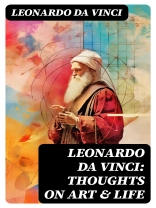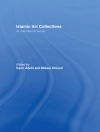In ‘Leonardo da Vinci: Thoughts on Art & Life, ‘ the illustrious Renaissance polymath delves into the profound interplay between artistic creation and the human experience. This compendium of thoughts showcases Leonardo’s introspective reflections, tracing the origins of his masterpieces while illuminating his theories on beauty, nature, and the essence of creativity. The text, characterized by eloquent prose and rich insights, transcends mere art criticism, offering readers a glimpse into the mind of one of history’s greatest geniuses amid the cultural resurgence of the 15th and 16th centuries. Leonardo da Vinci (1452-1519) is celebrated not only for his groundbreaking artistic achievements, such as the ‘Mona Lisa’ and ‘The Last Supper, ‘ but also for his insatiable curiosity and scientific inquiries. His extensive observations on anatomy, physics, and engineering influenced his artistic vision, leading him to explore themes of human emotion and the natural world. The integration of art and science in his work reflects the quintessential humanistic ideals of the Renaissance, rooted in the belief that knowledge fosters creativity. For historians, art enthusiasts, and curious minds alike, ‘Leonardo da Vinci: Thoughts on Art & Life’ offers invaluable insights into the motivations behind some of the most iconic artworks in history. This book serves as a profound meditation on the nature of artistry, making it a must-read for anyone seeking to understand the deeper connections between creativity and the human spirit.
About the author
Leonardo da Vinci (1452-1519), Renaissance man par excellence, is universally recognized as one of the most ingeniously talented individuals in human history. His contributions span a remarkable range of disciplines, including art, science, engineering, anatomy, and literature. As an author, Leonardo’s writings were disseminated primarily through his notebooks, which contained sketches, scientific diagrams, and his musings on life and art. ‘Leonardo da Vinci: Thoughts on Art & Life’, a compilation that crystallizes his extensive contemplations and philosophy, showcases the reflective aspect of his genius. Leonardo’s literary style is akin to his artistic sensibilities—detailed, profound, and methodical. Unlike conventional authors, his written legacy is not composed of structured books but rather collections of his myriad notes and journals that have been posthumously organized and published. His insights reveal a mind deeply inquisitive about the nature of reality and the potential of human creativity, offering a timeless window into the ethos of the Renaissance. Leonardo’s writings, though fragmentary, reflect a harmonious blend of art and scientific inquiry, embodying the Renaissance ideal of the ‘universal genius’.












